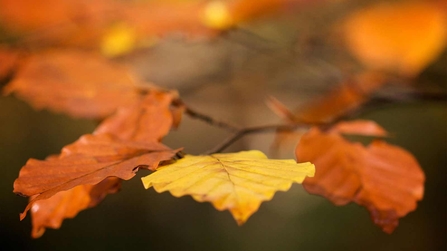For many people, autumn is a time of beauty. A time when nature resets itself and makes changes so that it can flourish again the following year.
In the UK, autumn is synonymous with deciduous trees losing their leaves and day lengths becoming shorter. The green pigment Chlorophyll is responsible for leaves having their green colour, of course, but as its production ceases in the autumn, two other chemicals also required for photosynthesis give leaves their golden colours. Anthocyanin has a deep red colour and is responsible for protecting cells in the leaf from high light damage, acting as a kind of sunscreen. Carotene is a yellow pigment and it has a secondary role in photosynthesis, absorbing sunlight energy and transferring this energy to the chlorophyll. Carotene also has a role to play in the pigmentation of feather colours in some birds, being responsible for producing bright yellow and reds.

